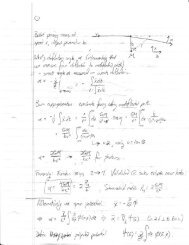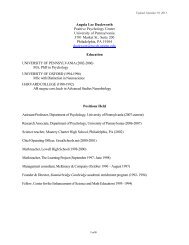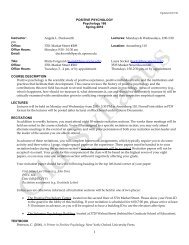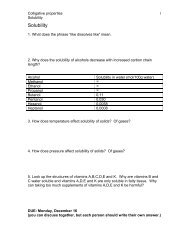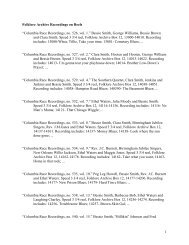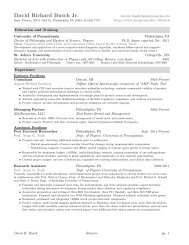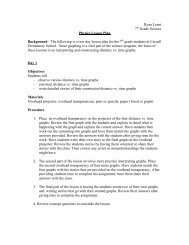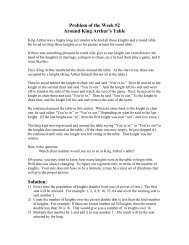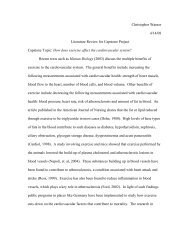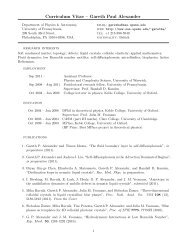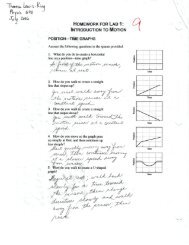Dusty Carroll Lesson Plan 4: Getting to know Lactase Background ...
Dusty Carroll Lesson Plan 4: Getting to know Lactase Background ...
Dusty Carroll Lesson Plan 4: Getting to know Lactase Background ...
You also want an ePaper? Increase the reach of your titles
YUMPU automatically turns print PDFs into web optimized ePapers that Google loves.
Putting It All Together<br />
Work <strong>to</strong>gether in your chem/bio groups <strong>to</strong> answer the following questions. Make sure that EACH of you<br />
<strong>know</strong>s how <strong>to</strong> answer the questions and is able <strong>to</strong> understand what you write down. This may NOT be the<br />
last time you see these questions!!!<br />
1. You have learned how the study of enzymes can depend on some chemistry principles. Using this<br />
simpler example, answer the following questions.<br />
From the 1999 AP Chemistry Test<br />
2 NO(g) + Br2(g) � 2 NOBr(g)<br />
A rate study of the reaction represented above was conducted at 25ºC. The data that were obtained<br />
are shown in the table below.<br />
Experimen<br />
t<br />
Initial<br />
[NO]<br />
(mol L –1 )<br />
Initial<br />
[Br2]<br />
(mol L -1 )<br />
Initial Rate of<br />
Appearance of<br />
NOBr (mol L –1 s –<br />
1 )<br />
1 0.0160 0.0120 3.24x10 –4<br />
2 0.0160 0.0240 6.38x10 –4<br />
3 0.0320 0.0060 6.42x10 –4<br />
(a) Calculate the initial rate of disappearance of Br2(g) in experiment 1.<br />
(b) Determine the order of the reaction with respect <strong>to</strong> each reactant, Br2(g)and NO(g). In each case, explain<br />
your reasoning.<br />
(c) For the reaction,<br />
(i) write the rate law that is consistent with the data, and<br />
(ii) calculate the value of the specific rate constant, k, and specify units.<br />
(d) The following mechanism was proposed for the reaction:<br />
Br2(g) + NO(g) � NOBr2(g) slow<br />
NOBr2(g) + NO(g) � 2 NOBr(g) fast<br />
Is this mechanism consistent with the given experimental observations? Justify your answer.<br />
2. You have learned that the rate of enzyme-catalyzed reactions may depend on various fac<strong>to</strong>rs. Think<br />
about the conditions inside your body and list several other fac<strong>to</strong>rs which may influence the rate of a<br />
reaction inside your body.<br />
3. It was mentioned that in the quaternary structure of an enzyme, the individual chains may be held<br />
<strong>to</strong>gether by covalent or intermolecular forces. What are the intermolecular forces we have discussed<br />
previously in this class?



